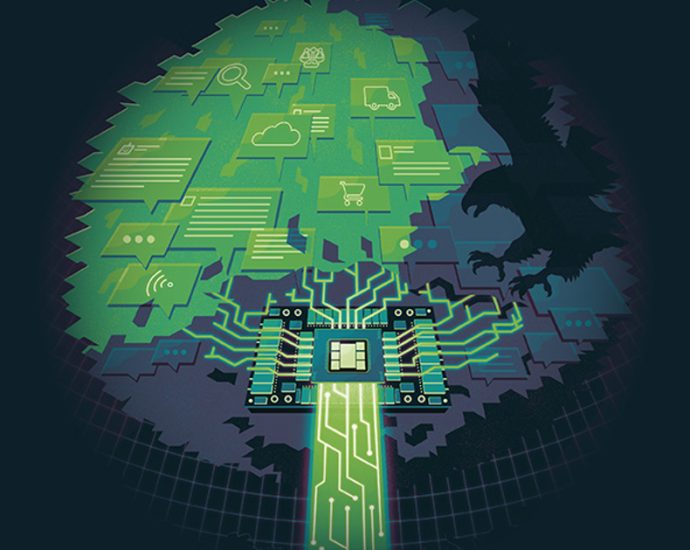Sustainable transformation: making transition finance stick | FinanceAsia

The Asia Pacific region is currently facing a significant gap in the race to fund decarbonisation – estimated at $US1.1 trillion by the International Monetary Fund (IMF).
However, this is not the only problem for a region whose coal-fired economies represent around half of global emissions, according to the International Energy Agency.
China alone accounts for 35% of global CO2 emissions, the agency says.
Speakers at the Sustainable Finance Asia Forum 2024 said that regulators will need to rebalance sustainable investment priorities – placing more emphasis on adaptation rather than mitigation – if the region’s most heavily polluting emerging economies are to meet their carbon zero targets.
Debanik Basu, the head of responsible investment and stewardship APAC at APG Asset Management, told a panel on harnessing transition finance for sustainable transformation that investment in mitigation (reducing greenhouse emissions at source) now represented the majority of transition funding.
He said the often more complicated task of climate adaptation – the need to change systems, behaviours and whole economies – was receiving scant attention.
“Currently the region is getting around $300 billion in transition finance so there’s a massive gap that needs to be addressed,” he told the conference. “Even within the small portion of finance that we are getting, more than 80 per cent of the funds are moving towards mitigation.
“Consensus estimates suggest that ideally it should be 50/50 between mitigation and adaptation.”
He said the other critical problem was that aspects of climate finance were not well understood and appreciated by the market overall, in particular within the agriculture and forestry segment.
“When you look at the NDCs (Nationally Determined Contribution) put out by a lot of countries, there are specific targets around climate change, but there aren’t explicit targets around forestry and agriculture,” he said.
“And even when there are targets, there is no clear roadmap. What all this means is that the institutional capacity is lacking. There are gaps in infrastructure and there are gaps in knowledge.
“As an investor, conversations with companies around biodiversity are at a very nascent stage.”
A question of taxonomies
Kristina Anguelova, senior advisor and consultant on green finance strategy APAC at the World Wildlife Fund, told the conference that regulation was moving in the right direction, guided by hubs such as Singapore and Hong Kong.
She added that the unofficial rivalry between Hong Kong and Singapore in terms of developing regulatory taxonomies was having a positive effect on the transition finance landscape in the region.
“I think the competition between Singapore and Hong Kong in this case is a good thing because it’s advancing regulation in the region quite a bit,” she said. “The Singapore Asia Taxonomy lays out transition taxonomy criteria across eight sectors.”
While the regulation is tailored to Singapore, she said she believed it would lay foundations for others to follow.
“It’s so important as a regulatory piece because it can serve as an incentive for investors to start to scale transition finance comfortably and confidently without the loopholes and the risks of potentially being accused of greenwashing,” she said.
In terms of biodiversity, she highlighted the nascent stage of biodiversity finance compared to climate finance, discussing the need for capacity building, regulatory clarity, and financial instruments to support nature-based solutions.
A case in point, she said, is the International Sustainability Standards Board (ISSB) which is developing standards aimed at developing a high-quality, comprehensive global baseline of sustainability disclosures focussed on the needs of investors and the financial markets.
“On biodiversity, I think we’re moving a bit slowly, but we’re getting there. Obviously coming from a science-based NGO, efforts can never be fast enough,” she said. “But the good news is that the ISSB will also be integrating the TNFD or the Task Force for Nature-related Financial Disclosures soon.
“Those jurisdictions that have adopted or committed to the ISSB will also be adopting those nature regulations.”
The challenge as always, she added, was that regulators had to strike a balance between mitigating financial risk and overregulating such that it slowed economic development.
Blended solutions
Building capacity, both speakers argued, would be critical to transition finance solutions to climate change and that new instruments, particularly in blended finance, were likely to be leading the charge.
“We are seeing beyond transition bonds to different types of instruments that are designed to go into blended finance structures such as transition credits which are based on the assumption that we can get carbon savings out of early retirement of coal-fired power plants,” Anguelova said.
One avenue that was currently being explored in a number of jurisdictions was concessionary capital: i.e. loans, grants, or equity investments provided on more favourable terms than those available in the market.
These terms could include lower interest rates, longer repayment periods, grace periods, or partial guarantees.
Of these instruments, Basu said, guarantees were evolving as one of the methods currently being pursued in several markets.
“What we are also seeing is that, apart from concessionary capital, a lot of public institutions are more comfortable with providing guarantees instead of direct capital because that then keeps the overall cost of capital down,” Basu said.
“It might be at a very nascent stage – and it is difficult to say if this is going to be the future – but it is developing,” he said.
¬ Haymarket Media Limited. All rights reserved.
























